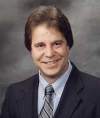What's happening in exploration
It’s time to nominate the Ig-worthyOnce again, it’s nominations time for the Ig Nobel Prizes. This prestigious award is bestowed to those rare, imaginative scientists, researchers and inventors whose work "cannot or should not be reproduced." For the past 11 years, the awards have garnered interest in scientific pursuits – both bona fide and weird. For example, past winners George and Charlotte Blonsky, won for inventing US Patent No. 3,216,423: an aid for giving birth. The mother-to-be is strapped onto a circular table, which is then rotated at high speed. Centrifugal force presumably does the work (I suppose a circle of doctors ensures a good "catch" of the baby). Videos of last year’s event and other interesting facts can be found at http://www.improbable.com. Last year’s winner in computer science was this editor’s favorite. Chris Niswander of Tuscon, Arizona, figured that since most computer functions have equivalent keyboard combinations – people might be willing to pay $25 to prevent deleting a directory or inadvertently sending everyone in your address book that flaming e-mail. Research has shown that cats can do this. So Chris invented PawSense: software that detects when a cat is walking on your keyboard, and then takes appropriate actions, such as shutting down keyboard input and making weird, anti-cat noises. (Editorial disclaimer: Past feline behavior is no guarantee of future performance; results may vary from cat to cat.) Anyone can nominate anyone for an Ig Nobel; even self-nomination is allowed. The award ceremonies are held at Harvard University on the first Thursday in October. To attend, winners have to travel at their own expense – more than half do. Once there, winners are treated to the cheers of 1,200 adoring fans, as well as a blizzard of non-lethal objects hurled at them (mostly paper airplanes). Winners also get to meet genuine Nobel Laureates who personally hand the Ig Nobel Prizes to them. As if that weren’t incentive enough, the honorees receive various gifts, such as a copy of The Annals of Improbable Research and a medallion – meant to be worn about the neck – made of genuine cement. All of which brings us to my main purpose for writing this: Our industry has not been adequately represented. With as many "black boxes" and similar devices invented, surely someone knows somebody who is worthy. Perhaps there’s an inventor with a high-tech carbon-fiber divining rod that, in the right hands, can detect oil reservoirs at 30,000-ft depths, replacing the forked willow branch – the current industry standard. Send your nominations of a deserving person, group or institution (name, Ig-worthy accomplishment and contact information) by e-mail to: marca@chem2.harvard.edu. My own nominee is discussed below. Creation science isn’t. The American Geophysical Institute is a federation of 34 geoscientific and professional associations – including AAPG, SEG, SEPM and SPE – representing more than 100,000 geologists, geophysicists and other earth scientists. Much of what follows was culled or paraphrased from their web site: www.agi.org. AGI strives to increase public awareness of the vital role the geosciences play in mankind’s use of resources and interaction with the environment. A strong science curriculum cannot be one that omits the core understanding of the development of life and Earth itself over geologic time. Evolutionary theory, like plate tectonic theory or the theory of gravitation, is the product of scientists’ continual commitment to search for a better understanding of how natural systems operate. A spate of challenges to teaching evolution and concepts of geologic time is now occurring in state legislatures and school boards across the U.S. Consider what has occurred in just February and March. On March 23, 2001, the Arkansas Legislature considered a bill to outlaw state agencies from purchasing materials that contain "information that has been proven false or fraudulent." Information affected by the legislation included the theory of the age of the earth, the theory of the origin of life, the geologic column and radiometric dating. The bill failed in the House by only six votes. A bill to change Michigan science standards was referred to the State Legislature Education Committee on February 28, 2001. It would require that students be exposed to "competing theories of evolution and natural selection based on random mutation and the theory that life is the result of the purposeful, intelligent design of a creator." On Feb. 19, 2001, the Montana House Committee on State Administration, in a 14 – 4 vote, defeated a bill that would have required Montana’s science teachers to present additional theories of origin along with evolution. On February 13, 2001, a bill seeking to reform the teaching of "scientific theories of the origins about life and living things" was sent to the House Education Committee of the Georgia General Assembly. The Creation Science Association for Mid-America is headed by Tom Willis, one of the political leaders in the creation-science movement. He masterminded the school science curriculum controversy in Kansas. In an interview in the April 2000 issue of New Scientist, Willis said the following: NS: Just for the record, do you believe the sun goes around the earth or the earth goes around the sun? Willis: I’m sure your readers will love this, but I don’t know. Every physicist who’s looked at it seriously has realized that we don’t know for sure. I’m not sure who "every physicist" is
that Willis is talking about, but sending a spacecraft to – and landing on – another planet is the
equivalent of shooting a sand grain at a marble 20 mi away and hitting a particular spot (actually, better
than that!). To accomplish such an astounding feat requires that Newton’s law of gravity and Kepler’s
law of planetary motion must be correct. For his remarkable pre-Copernican beliefs, Willis will be nominated
for this year’s Ig Nobel Prize in physics.
|



